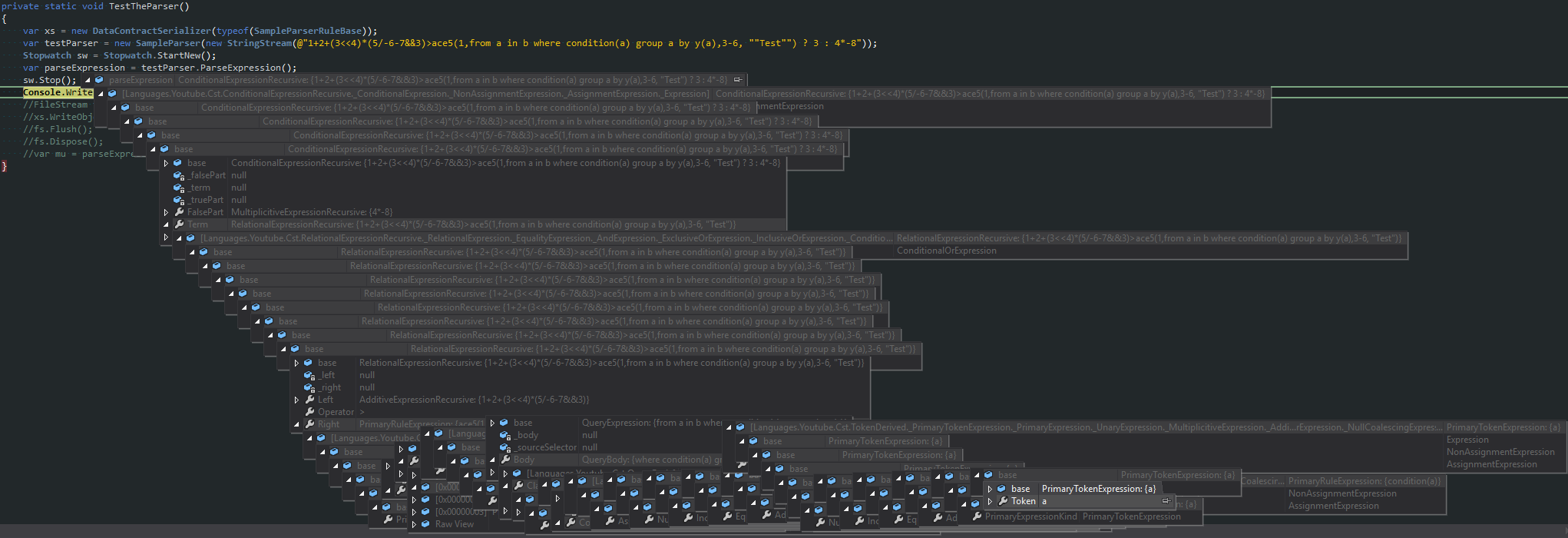In OILexer, when you define a rule as an alternation of other rules, such as:
A ::=> /* The '>' represents a point of collapse. */
B |
C |
D ;
I was working on OILexer's code gen process and I've always been a little miffed by the level of deep diving into object graphs that I've had to do for left-recursive representations of mathematical operator precedence (maths, * before + and so on)
Sometimes to see that they typed 5, I would have to go n levels deep, where n is the number of precedences defined in the language.
Instead of making a type that represents 'A' and giving it a single child of either a B, C or D, the logical solution was to use inheritance, and if you have a 'D' in place of that 'A', you'd have a derivative of D which is also an A.
This is all well and good, but when you're trying to debug an app, it can create some developer-based bottlenecks (time-wise).
Here's an example of what debugging was like before the automated DebuggerTypeProxy instances:

(Click to enlarge)
After automating the debugger type proxies:

(Click to enlarge)
You'll quickly notice that getting to the meat of the definition is near immediate by comparison.
The example, in both screenshots, represents the opening concept, just expanded out a bit further.
This does create some nasty object hierarchies but the trade-off of generated types for the simplicity of browsing the object hierarchy makes it worth it in the end.
CodeProject
